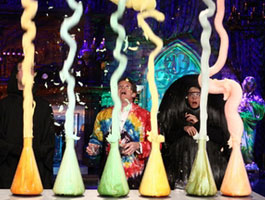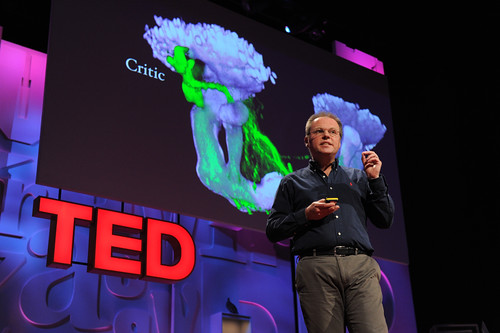Freddy the Fox
Tuesday, February 19, 2013
ScienceCasts: Space-Time Vortex - YouTube
http://science.nasa.gov/science-news/science-at-nasa/2005/16nov_gpb/
Killer Cats
Cats kill between 1.4 billion and 3.7 billion birds every year in the
United States, according to a new study.
Credit: Emily Krieger
Ahead of the Wave
Water pours ashore as a tsunami strikes the east coast of Japan on March 11, 2011.
Credit: Mainichi Shimbun/Reuters
Meteor Explodes Over Russia
A meteor streaks across the sky over Russia on Friday morning. The
fireball was the largest known to have detonated in the atmosphere since
1908.
Credit: AP Photo, Chelyabinsk.ru
Steve Spangler's Ping-Pong Ball Blast - YouTube
Brought to you by Emilynne
http://www.ellentv.com/videos/1-9fj6rntm/
Cool Jobs: Crime Scene Investigators
Brought to you by Sabina
The dead do tell tales — if experts care to listen. Forensic
anthropologist William Bass arranges a display of how a person’s bones
change year by year as we age. This information can help identify a
crime victim when little else is known. Credit: University of Tennessee,
Knoxville
The Return of a King
Brought to you by Sabina
This skeleton found beneath a parking lot in England belonged to Richard
III, who ruled England in the 15th century. The bones show his curved
spine and reveal the injuries that killed him.
Credit: Univ. of
Leicester
Tuesday, February 12, 2013
Sleeping in Space
Long space flights may harm astronauts’ sleep patterns, a 520-day
experiment found. Replacing fluorescent bulbs with blue lights like the
ones in this photo may help avoid those problems.
Credit: ESA
The Route to Problem-Solving
Teams
of young researchers brainstormed ways to protect a raw egg — sometimes
using bubble wrap — so that it could be dropped from various heights
without breaking at a major competition in Washington, D.C., last fall.
Students from around the country came together to work on engineering
challenges.
Credit: iStockphoto
A Smarter Scan
Tiny patterns cut into this narrow copper strip filter microwaves. This
new, simple technology makes it possible to take digital pictures
faster, with less computer time required. And it could be used to help
make airport scanners smarter, faster and cheaper.
Credit: J. Hunt/Duke
Music of the Future
Brought to you by Elena
People don’t have to go to outer space to
make music in new ways. Technologies using computers and sensors are
being created that will let people do that right here on Earth.
NASA/JPL
Unmarked Police Cars Lead to Dangers for Citizens
Brought to you by Jahan
http://autos.aol.com/article/unmarked-cop-cars/
Asteroid to Miss Earth by Less Than 20,000 Miles Next Month
Brought to you by Finn
An asteroid passing close to Earth next month will provide stargazers with a rare viewing opportunity
(Image: Shutterstock)
Steve Spangler on the Ellen Show - YouTube
Brought to you by Bryan
http://www.stevespanglerscience.com/who-is-steve-spangler/ellen-degeneres
Exploding Watermelon - YouTube
Brought to you by Ian
http://pechonjr.wordpress.com/2011/05/17/exploding-watermelons/
Tuesday, February 5, 2013
Steve Spangler on The Ellen Show Oct. 2010 - YouTube
Brought to you by Bryan
http://www.flickr.com/photos/stevespangler/3207919816/
Shoulder Bones Fuel Debate
Brought to you by Jahan
This shoulder blade is from a 3-year-old humanlike female who lived more
than 3 million years ago. Scientists are studying the fossil to learn
whether the creature climbed trees.
Credit: Courtesy of Zeresenay
Alemseged/Dikika Research Project
Color-Changing Robot
Brought to you by Jahan
Tiny tubes filled with colored dyes let these soft robots blend in with their environments.
Credit: S. Morin, Harvard University
Battling Bad Science - Video
Brought to you by Emilynne
http://sylvainzimmer.com/category/ted/tedglobal-2010/
Scientists Film Giant Squid In Its Natural Habitat - Video
Brought to you by Finn
In this photo released by Tsunemi Kubodera, a
researcher with Japan's National Science Museum, a giant squid attacking
a bait squid is pulled up by his research team off the Ogasawara
Islands, south of Tokyo, on December 4, 2006.
Photograph courtesy Tsunemi Kubodera of the National Science Museum of Japan/AP
"Endosymbiotic" Algae Live Within the Cells of Salamanders
Brought to you by Weston
Image of chlorophyll-colored salamander embryos courtesy of Roger Hangarter
Scents of Science
Brought to you by Ethan
Humpback whales sometimes breach, or leap into the air. Some scientists
believe the behavior allows the marine mammals to smell scents wafting
over the water.
Credit: NOAA
Credit: NOAA
Subscribe to:
Posts (Atom)






















